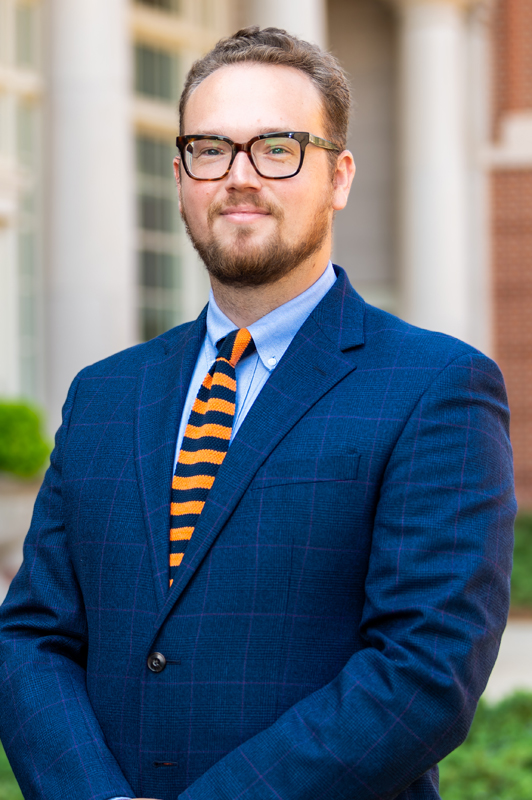Engineering, history professors team to recreate 500-year-old mechanical hand
Published: Oct 27, 2022 11:00 AM
By Charlotte Tuggle
Researchers in the College of Liberal Arts’ Department of History and the Samuel Ginn College of Engineering at Auburn University hope to recreate part of the past by creating a working model of one of the world’s earliest mechanical prosthetics.
The Kassel Hand, a right-hand prosthesis from Germany, is one of the earliest examples of a form of wearable technology that first appeared in the sixteenth century. Assistant Professor of History Heidi Hausse first began to study it as part of her work on material culture, or the study of how historical artifacts inform life and how we live it.
During the course of her investigation, Hausse enlisted an architect to create visual models of the hand and disproved a long-held misconception that surgeons invented mechanical limbs. The Kassel Hand, and others like it in the 1500s, were the result of collaboration between amputees and artisans like locksmiths and clockmakers.
“This particular case holds great importance of restoring the role of amputees in being an important part of the design process and creation of a new technology that became very influential in Western culture,” Hausse said. “What we’re finding out essentially by looking at this artifact is the role of artisans and amputees together creating a new prosthetic technology that for decades and decades, historians assumed surgeons invented.”
At Auburn, Hausse sought out Assistant Professor of Mechanical Engineering and Wearable and Bio-Robotics Lab Director Chad Rose to bring the project to the next level. In his lab, the researchers are working to create a functioning copy of the Kassel Hand.
Hausse gave Rose the models from her previous research, and Rose’s team began to translate the digital 3D designs into files for 3D printing. Because of the Kassel Hand’s age, and the fact that it cannot be taken apart for examination, Rose and his team needed to find how to replicate mechanisms they couldn’t see.
For Rose, the opportunity to collaborate with Hausse is a unique engineering challenge and way to engage with disciplines across campus.
“Engineers are always geared up to solve a problem. The more interesting the problem, the better,” Rose said. “At Auburn, there are historians, engineers, roboticists and students all getting the chance to work together on this. So, when Dr. Hausse came to me with this project, I was excited to support not just the research within mechanical engineering, but across Auburn’s campus.”
At this stage of the project, the research team has created a prototype made of plastic and resin. They also isolated the lock-and-release mechanism that allows the fingers to move and grip to figure out how it works.
Their next challenge to overcome will be balancing the design process so that when the team casts a model in metal, the hand works as closely as possible to its original functionality.
Avinash Baskaran is a graduate student in Rose’s lab with a research background in wearable technology and prosthetics. He said throughout the process, they’re learning more about how wearable technology and bio-robotics have improved lives throughout history.
“We’re learning more about how engineering concepts have been applied in different mechanical systems throughout time and how to integrate these functions into our robotics systems,” Baskaran said. “What motivates me is learning how to create technology that adapts to the needs of humans, so this is really a project that shows the evolution of that process and how engineers have worked with people with disabilities to create technology that makes life better.”
Ultimately, the research team hopes to create a model that accurately reflects what a prosthetic looked, felt and moved like in the 1500s. Because the original artifact cannot be examined in a lab setting, the copy will provide further research avenues into the functionality and history of prosthetics.
Historian Heidi Hausse said experimentation would be impossible without the interdisciplinary collaboration of the project.
“It’s not just about having a physical copy trying to replicate something, it’s about having a physical copy that we can experiment with and learn more about how it operates as an interface between the human body and the world of objects around it,” Hausse said. “Chad and Avinash bring an expertise that helps me think in new ways about an object that I’m so familiar with and I’m very grateful to them for wanting to be a part of a wonderful collaboration between our disciplines.”
Media Contact: , ctuggle@auburn.edu, 334.752.0627

